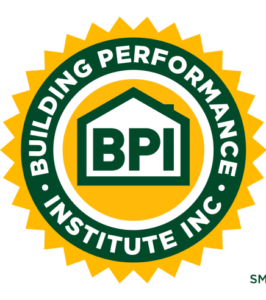Completely soundproofing an existing home is fairly difficult and costly on its own. There are a lot of “tips and tricks” out there, but the fact is, the only way to fully soundproof a home is by tearing into your walls and/or ceiling.
The upside is, if you’re thinking of redoing your insulation or any kind of remodeling, you have a great opportunity to work on your soundproofing as well. Soundproofing techniques tend to overlap with other home performance upgrades. Improving insulation (walls & attics mainly), reducing air leakage, double pane windows, etc, are all things that will improve comfort and efficiency while simultaneously reducing sound transmission in and out of your home.
One popular question is, “What types of insulation are best for soundproofing?” The answer is difficult to pin down. Some materials are specifically designed to reduce sound transmission, but in those cases you may be sacrificing other attributes, such as R-value.
The quality of the work is more relevant. A tightly sealed and well-insulated wall will reduce more sound than a sloppily constructed one of the same width, regardless of the materials used. That being said, we at Eco Performance Builders have found 3 types of insulation to be particularly effective when it comes to reducing sound transmission: Polyiso foam or rigid foam board, Wet blown-in cellulose, and Denim insulation. We have found each to be highly effective for both soundproofing and thermal resistance.
Although a large impact is made in sound reduction when these insulation materials are used correctly, you may want to take further steps to improve your soundproofing. If so, you’ll need to understand, to some extent, how it works.
Basic Concepts of Soundproofing
Damping: Reduce the transmission of vibrations between rigid surfaces (like drywall and studs) by adding adhesives or other materials that convert sound into very small amounts of heat.
Decoupling: Create gaps in a building’s structure, such as in the staggered studs construction technique.
Mass and Space: Block sound by simply placing more stuff between the source and the listener (like thick concrete or extra layers of drywall).
Absorption: Actually the least effective method, absorption is better suited for preserving the clarity of sound by reducing echo within a room. However, sound-absorbing insulation inside walls and ceilings can provide a small boost to overall soundproofing as well.
STC Rating: Sound Transmission Class is a measure of the sound reduction properties of a building partition, such as a wall, floor, ceiling, door, or window. To give a point of reference, a good overall STC rating for a wall is around 50. Look for this rating when purchasing products, but take it with a grain of salt.
Other Soundproofing Options

In most cases, people want to soundproof their home without having to tear up their walls and ceiling in the process, which rules out some of the most effective strategies. However, there are clever, non-invasive ways to improve your soundproofing, many of which use the damping concept.
Windows
If you have poorly sealed, single-pane windows, you have a good opportunity to improve both soundproofing and home performance in one job. Double or triple-pane windows provide a decoupling effect while slightly improving insulation. Meanwhile, weatherstripping and caulking improve both sound damping and air sealing.
You can even add window film to the mix, which filters UV light and further improves thermal performance. Also, heavy curtains can improve sound absorption.
Doors
For exterior doors, install door sweeps (strips along the bottom of a door that close the gap between the door and the ground) and weatherstripping. This is a very cost-effective way to create sound damping and improve energy savings in one quick job.
Also, replacing hollow doors with solid, heavy ones will significantly improve soundproofing via the “Mass” method. However, this may or may not be cost-effective.
Walls/Ceiling
If you want to improve the STC of a wall or ceiling, there are basically two options, neither of which is easy. First of all, if you want to redo your insulation or you’re simply remodeling, then you have the perfect opportunity to improve your soundproofing at the same time. Polyiso foam and wet blown-in cellulose are both great for sound (and have excellent R-values as well). For an extra boost, use a sound-damping adhesive between studs and drywall, or any other connections between rigid surfaces.
Furthermore, installing multiple layers of drywall with a sound-damping adhesive in between can be effective, though somewhat costly in terms of space and materials. Finally, you can use steel studs, which transmit less sound than wood, mostly due to the smaller surface area. However, steel is a good conductor of heat (opposite of insulation) which takes away from the overall insulation value of your wall.
For the less invasive option, you can basically build another layer of wall on top of your existing one, and place a sound-damping adhesive between them. This is certainly a lot of work, but there are products designed to make it easier. Of course, it has the disadvantage of shrinking your room slightly.
Other
You can use “acoustical caulk” to seal up all cracks and gaps. Regular caulking is fine too, but the acoustical stuff is specifically designed to dampen sound, so it may provide a slight improvement, depending on the quality of the application.
You may also come across a product called “acoustic panels,” or other products that provide sound absorption or dispersement. These are generally cheap and easy to install, but unfortunately they do not significantly reduce incoming sound. Rather, they improve the quality of sound within a space via absorption (reducing echo, etc).
If you don’t want to touch your walls and ceiling, then focus on your doors and windows. They have the least invasive, and often the most cost-effective upgrades.
For more information, call (925) 363-4498 or e-mail info@epbuilders.com to speak to a technician, or schedule an energy audit.













